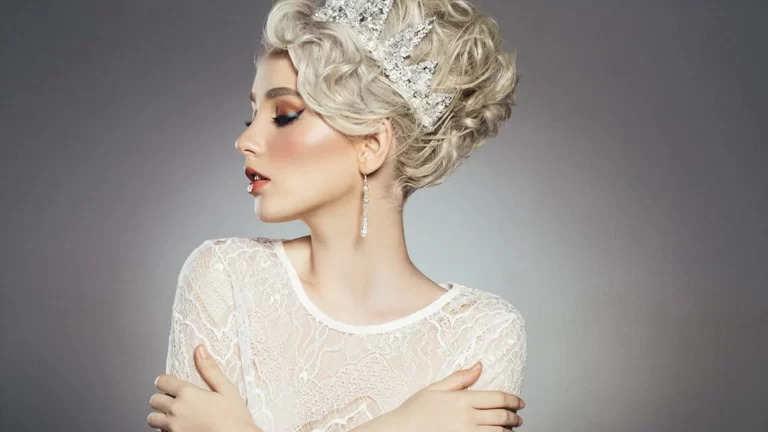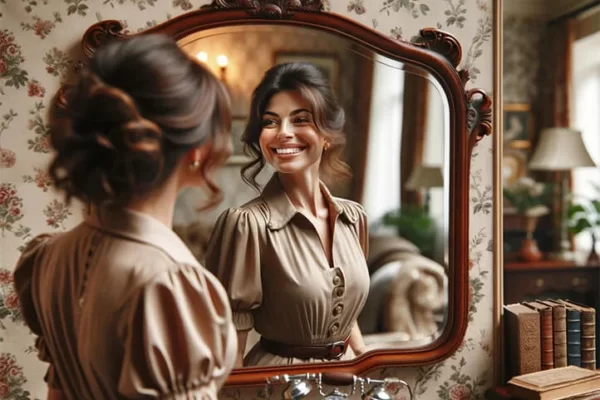An archetype is a stable, universal image or symbol that appears in the human mind. This concept was proposed by the Swiss psychologist Carl Jung, who believed that archetypes are an integral part of the collective unconscious and they are common to people of different cultures and eras.
Archetypes in psychology play an important role in the formation of human identity and behavior. They can affect various aspects of life such as relationships, career, personality development and others. There are several types of archetypes, such as the archetype of mother, father, loved one, hero, warrior, witch, wise woman and others.
The importance of archetypes in psychology is that they can help a person better understand themselves, their feelings and behavior. Understanding and identifying archetypes in one’s consciousness allows an individual to focus on one’s goals and development, as well as maintain balance in life and increase self-esteem. In addition, archetypes can be useful in psychotherapy, since understanding them helps to uncover and solve some of the problems that a person is facing.
In general, archetypes are an important component of psychology, which gives us the opportunity to better understand ourselves and the world, increase self-esteem and achieve success in various aspects of life.
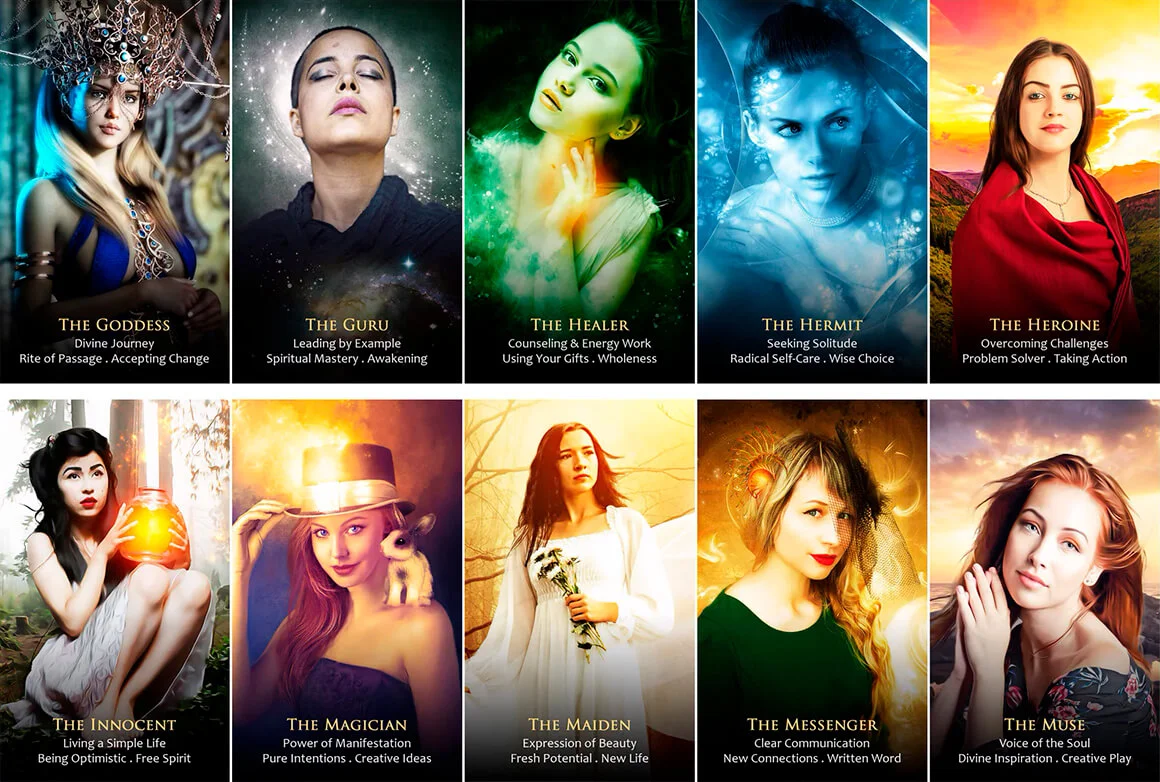
Feminine archetypes in psychology
Archetypes are universal symbols and images that arise from the collective unconscious of humanity. They are often used in mythology, literature and psychology. The main feminine archetypes studied by Swiss psychologist Carl Gustav Jung and his followers include:
- Mother (Mother Earth). This archetype symbolizes the rare feminine power that creates life, wisdom, care and support. It is often associated with motherhood, fertility and the life-giving forces of nature. The mother can be presented as noble and sacrificial, but also as devouring and destructive.
- Virgo (Pristine Girl). Virgo symbolizes independence, purity, integrity and integrity. This feminine archetype often depicts a young, tender and beautiful girl who can become an object of worship. Virgo can symbolize spiritual harmony, creativity and intellectual development.
- Priestess (Wise Woman). The Priestess represents spirituality, wisdom, mystery and mystery. This archetype is associated with a connoisseur of secret knowledge, a guide between worlds, a mentor or healer. The Priestess can also symbolize inner intuition and spiritual awakening.
- Lover (Sexy Woman). The Lover symbolizes passion, sexuality, attractiveness and lust. This feminine archetype in psychology is represented by a sexually alluring woman, awakening her innermost desires and fantasies. The Mistress can also symbolize creative energy, cheerfulness and emotional intelligence.
- Warrior (Amazon). The warrior woman symbolizes courage, bravery, strength and devotion. This archetype is often depicted as a fighting girl or warrior who stands up for her principles and fights for justice. The Warrior Woman can also symbolize confidence, ambition and the ability to overcome obstacles.
- Staritsa (The eldest). The wise old woman symbolizes old age, experience, wisdom and compassion. This feminine archetype is often associated with a grandmother, teacher or mentor, passing on her knowledge and experience to the next generations. The oxbow can also symbolize inner harmony, spirituality and eternal values.
- Sorceress (Sorceress). The Witch symbolizes magic, medicine, the mysteries of nature and transformation. This feminine archetype in psychology is portrayed as a powerful and mysterious woman who has supernatural powers and manipulates reality. It can also symbolize the inner voice, intuition and creativity.
- Mermaid (Siren). The mermaid symbolizes temptation, danger and illusion. This feminine archetype is portrayed as an attractive and mysterious sea creature that drives sailors crazy with its singing and beauty. The siren can also symbolize femininity, creativity, and emotionality.
- Woman-Child (Eternal Girl). The woman-child symbolizes innocence, purity, frivolity and eternal youth. This archetype is most often associated with a young and untouched girl who looks at the world carefree and lives with an open heart. The woman-child can also symbolize eternal values, optimism and the ability to see miracles in everyday life.
- Sister (Second Me). A sister symbolizes closeness, cooperation, mutual assistance and intimacy. This archetype is portrayed as a woman who is supportive and understanding of others, providing emotional connection and solidarity. A sister can also symbolize authenticity, honesty and devotion.
- Rebel (Revolutionary). symbolizes confrontation, disobedience, revolution and transformation. This archetype is portrayed as a woman who refuses to follow tradition and stereotypes, fighting for her individuality and freedom of expression. A rebel can also symbolize creativity, courage and a willingness to take risks.
- Reformer (Social Activist). The reformer symbolizes change, progress, innovation and social justice. This archetype is associated with a woman who works for the benefit of society, improving its structure, maintaining equality and justice. The reformer can also symbolize idealism, self-sacrifice and perseverance.
- Muse (Inspiration). The muse symbolizes inspiration, creativity, art and harmony. This feminine archetype in psychology is portrayed as a woman who inspires others to great deeds, stimulating their creativity and development. The muse can also symbolize support, interaction and spirituality.
- Singer (Voice). The singer symbolizes expressiveness, communication, emotion and passion. This archetype is portrayed as a woman who has a powerful and emotional influence over others. The singer can also symbolize self-expression, beauty and art.
- Beast Woman (Instincts). The feminine beast symbolizes natural instincts, wildness, freedom and primitive needs. This feminine archetype is portrayed as a woman who is closely connected to her instincts, the animal world, and nature. The beast woman can also symbolize passion, strength, survival and wildness.
- The Thinker (Feminine Philosopher). The Thinker symbolizes intelligence, analyticity, rationality and wisdom. This archetype is depicted as a woman striving for knowledge, reflection and knowledge of truth. A feminine philosopher can also symbolize self-improvement, intellectual development and critical thinking.
- Creator (Feminine Inventor). The Creator symbolizes innovation, technology, ingenuity and creativity. This feminine archetype in psychology is associated with a woman who creates new solutions, technologies or discoveries that change the world. A feminine inventor can also symbolize genius, ambition and the desire for progress.
- Leader (Woman Guide). The leader symbolizes leadership, authority, responsibility and influence. This archetype is portrayed as a woman who has the power to control others, motivate and organize collective action. A feminine guide can also symbolize devotion, courage and self-belief.
These archetypes represent the variety of feminine roles that can be found in life and culture. But it’s important to note that no woman is limited to one archetype; most people identify different aspects of different archetypes throughout their lives.
It should also be understood that these archetypes do not necessarily reflect real women or limit their capabilities and ambitions. They help to understand and study different aspects of the feminine psyche, cultural images and behavior, which can be useful for personal development and self-knowledge.

The influence of archetypes on female identity
Archetypes play an important role in the formation of female identity, since they represent different facets of the female psyche and cultural images. The impact of archetypes on female identity can be considered in several aspects:
- Self-determination. Women can identify with one or more archetypes, looking for their own characteristics, values and interests in them. It promotes personality development, self-knowledge and self-expression.
- Social roles. Archetypes shape expectations of social roles and behavior for women, reflecting cultural traditions, stereotypes and norms. They can influence career choices, communication styles, family and partnership decisions, as well as activism and social life.
- Interaction with others. Archetypes influence the way we perceive and interact with other people, in particular with the opposite sex. They can be reflected in role models, relationships with parents, friendships, love and conflicts.
- Emotional and spiritual life. Archetypes influence women’s emotional needs, fears, dreams and quests. They can inspire art, religion, philosophy, psychology, esotericism and personal development.
- Collective subconscious. Archetypes play a role in women’s collective subconscious, reflecting shared myths, symbols, images and narratives passed down through generations. They can form shared beliefs, a sense of belonging and cultural identity.
- Transformation. Archetypes contribute to the transformation of female identity at different periods of life, helping women adapt to changes, losses, crises and new challenges. These may be reflected in initiation rituals and rites of passage.
- Empowerment. Archetypes help women feel their strength, confidence and potential while overcoming limitations, stereotypes and discrimination. They can stimulate activism, self-advocacy, self-support and solidarity.
- Creation. Archetypes inspire creativity and imagination, helping women express their thoughts, feelings, experiences and ideas through art, literature, theatre, film, fashion, design and other forms of cultural expression.
- Gender equality. Archetypes promote gender equality, recognition of the diversity of women’s roles and values, combating stereotypes and supporting female self-realization.
- The relationship of archetypes. Women’s identity can include various archetypes that interact, intersect and complement each other, reflecting different aspects, interests, age stages and contexts of a woman’s life. This can help women integrate different roles, talents, experiences and needs, and open up new opportunities.
Considering these aspects, the influence of archetypes on female identity and their reflection in behavior and relationships with other people can have both positive and negative sides. On the one hand, archetypes help women understand themselves, develop, adapt and express their uniqueness. On the other hand, archetypes can impose stereotypes, restrictions and prejudices that interfere with women’s development, freedom and equality.
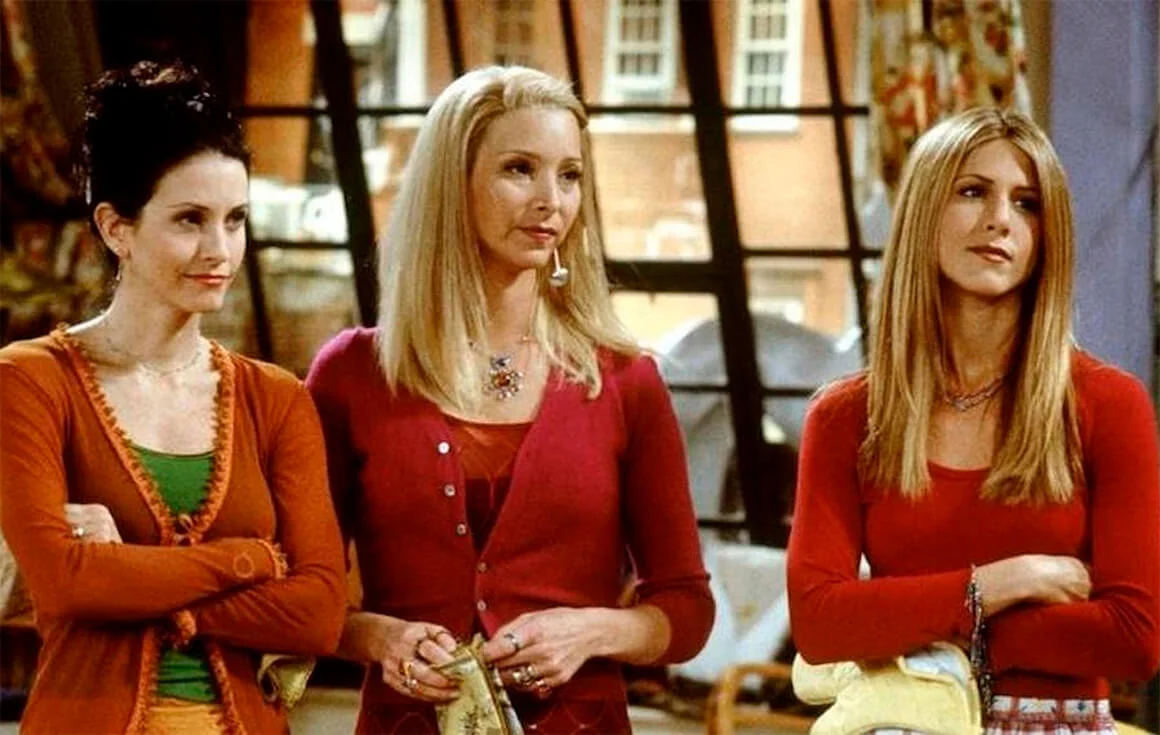
Reflection of feminine archetypes in behavior and relationships with other people
Feminine archetypes are reflected in behavior and relationships with other people due to certain aspects. Here are a number of examples of how archetypes influence the behavior and relationships of women:
- Communication. Archetypes can influence women’s communication style, openness, empathy, confidence and expression. For example, a woman who identifies with the “free soul” archetype may be more independent, creative, and spontaneous in her interactions.
- Role in relationships. Archetypes can shape women’s roles and expectations in relationships, their ability to cooperate, support, conflict and compromise. For example, a woman with a “mother” archetype will be more focused on caring for and supporting her family, while a woman with a warrior archetype will be more committed to protection and justice.
- Leadership. Archetypes can influence women’s leadership qualities, authority, initiative and determination. For example, a woman with the Queen archetype may exhibit strong leadership, control, and confidence, while a woman with the Crone archetype may favor diplomacy, advice, and mentoring.
- Emotional response. Archetypes can influence women’s emotional responses to various situations and challenges, their capacity for joy, anger, fear, sadness, love and compassion. For example, a woman with the “loving wife” archetype may exhibit greater sensitivity and passion in relationships, while a woman with the “virgin” archetype may exhibit greater restraint and self-control.
- Choosing a partner. Archetypes influence mate selection criteria, attraction, loyalty and commitment. For example, a woman with the nymph archetype may seek out exciting, erotic, and adventurous relationships, while a woman with the virgin archetype will prioritize purity, reliability, and long-term partnerships.
- Friendship and social connections. Archetypes can influence the types of friendships, social activities, and cooperation that women form with other people. For example, a woman with the “sister” archetype will value closeness, openness, and solidarity in her friendships.
- Conflict and problem solving. Archetypes influence conflict resolution strategies and style, negotiation skills, tolerance and responsibility. For example, a woman with the “warrior” archetype will be more direct, decisive and demanding in conflict situations, while a woman with the “old lady” archetype will prefer to ease tension, seek compromise and take responsibility for the consequences.
- Creation. Archetypes can encourage women to be creative, innovative, and dreamy in their relationships with others, encouraging them to develop new ideas, projects, partnerships, and networks. For example, a woman with the “muse” archetype will inspire, motivate and support the creativity and development of others.
- Mentoring and coaching. Archetypes can influence women’s ability to teach, help, counsel, and share their experiences, wisdom, and resources with others. For example, a woman with the “Old Lady” archetype can be an excellent mentor, advisor, and support to younger or less experienced friends.
- Empowerment and activism. Archetypes can motivate women to participate politically, socially, economically and culturally, to fight for rights, equality and justice, and to support and empower other women. For example, a woman with the Amazon archetype may be an active participant in the feminist movement, public organizations or international initiatives.
- Parenting. Archetypes can influence approaches to parenting, parenting styles, and expectations of family roles. For example, a woman with a mother archetype may be instinctively nurturing and protective, while a woman with a warrior archetype may teach her children to be independent and resilient.
- Interaction with colleagues. Archetypes influence professional relationships and interactions with colleagues at work, including cooperation, competition, delegation and leadership. For example, a woman with the “Queen” archetype will exhibit strong leadership and confidence in her work, while a woman with the “Old Lady” archetype will offer advice and mentoring to less experienced employees.
- Religious and spiritual practice. Archetypes can be reflected in religious and spiritual beliefs, values, practices, and relationships with higher powers or spirit guides. For example, a woman with the “saint” or “prophetess” archetype will prefer prayer, meditation, service, or seeking answers to life’s deep questions.
- Relations with the older generation. Archetypes can influence attitudes towards older generations, respect, traditions and heritage. For example, a woman with the “old lady” archetype greatly values the knowledge, advice and experience of her ancestors or predecessors.
- Environmental and social consciousness. Archetypes can influence attitudes toward the environment, environmental and social responsibility, and activism in these areas. For example, a woman with the Earth Mother archetype may be active in environmental movements, seeking to protect and preserve nature for future generations.
- Self-education and personal development. Archetypes can encourage women to engage in self-discovery, self-reflection and self-education, which helps develop their intellectual, emotional, cultural and spiritual resources. For example, a woman with the “creator” archetype may be open to new ideas and knowledge, and also active in finding her life path and mission.
- Hobbies and interests. Archetypes can influence the choice of hobbies and passions that reflect a woman’s creativity, passion, personality and values. For example, a woman with the “muse” archetype may express her creativity through art, music, dance, literature, or other forms of self-expression.
- Volunteering and charity. Archetypes can be reflected in volunteerism, charity and social service aimed at supporting, helping and empowering other people and communities. For example, a woman with the Samaritan archetype may be a volunteer helping those in need or an activist working on behalf of vulnerable groups.
- Health and wellness. Archetypes can be reflected in approaches to health, physical activity, nutrition, relaxation and stress, influencing a woman’s well-being, energy and vitality levels. For example, a woman with an “Earth Mother” archetype may eat a natural, organic diet and exercise regularly in nature, while a woman with a “Warrior” archetype may favor intense exercise or martial arts training.
- Communication and relationships. Archetypes can influence communication style, expressing emotions, resolving conflicts, and maintaining relationships with different people. For example, a woman with the “lover” archetype will exhibit emotional sensitivity, empathy, and kindness in her relationships, while a woman with the “warrior” archetype may strive for directness, openness, and fairness when dealing with problems or conflicts.
In general, different feminine archetypes can manifest themselves in behavior and interactions with others in different aspects of life. It is important to consider that every woman is unique, and her archetypes can combine and intersect in different contexts, situations and stages of life. The display of archetypes can change over time, allowing women to develop, learn and adapt to new challenges and circumstances.
Therefore, understanding your archetypes can help women understand their strengths, weaknesses, needs and values, and improve their relationships with others.
Understanding your own archetypes can become a tool for personal growth and development. Women can use this knowledge to work on self-esteem, self-acceptance and self-actualization. In addition, the study of archetypes promotes greater tolerance and mutual understanding between people of different cultures, generations and social groups.
In modern world, where women’s roles and expectations continue to expand and change, feminine archetypes can serve as a source of inspiration, strength and wisdom for women in various walks of life. Understanding and flexibility of feminine archetypes helps modern women find their path, realize their potential and make their unique contribution to the development of humanity.
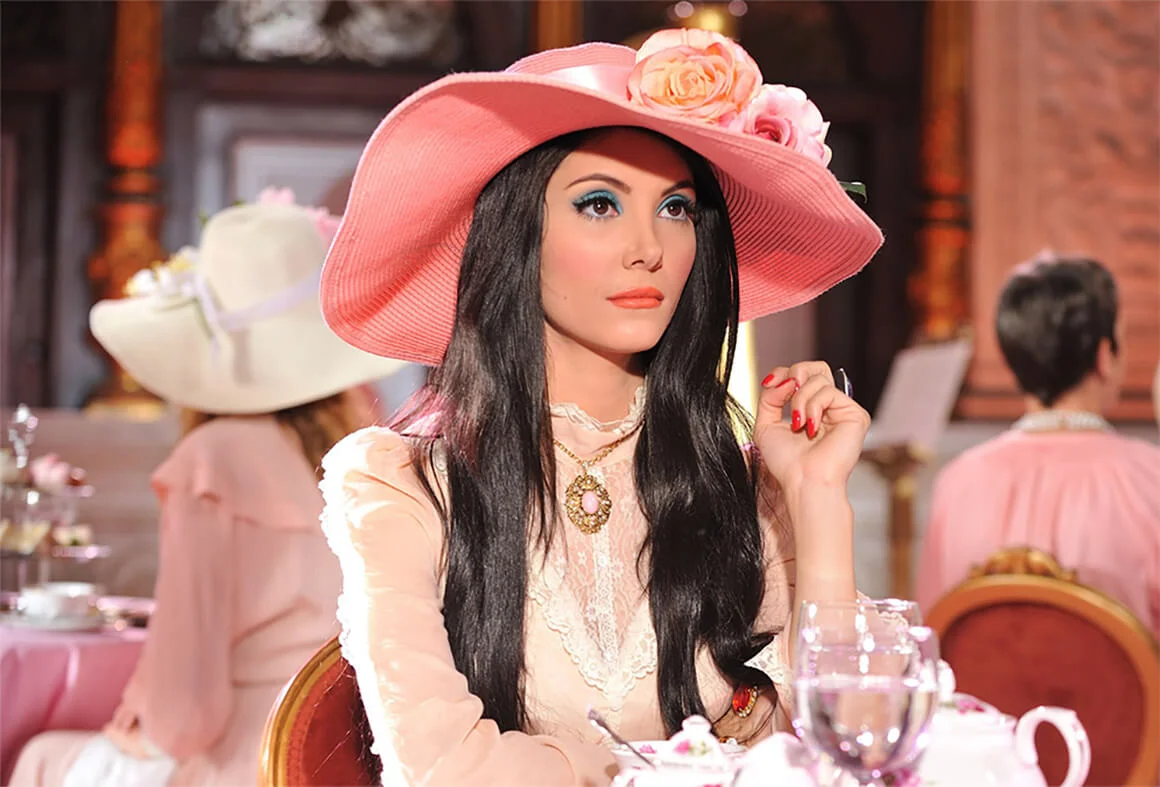
The role of feminine archetypes in personality formation
Feminine archetypes play an important role in the formation of personality, since they reflect deep psychological processes, ideas and feelings that influence the perception of oneself, the world and other people. Archetypes can help women understand their inner conflicts, needs, motives and values, and contribute to their personal growth and self-realization. Here are some examples of how archetypes can influence personality formation:
- Self-knowledge. Archetypes can help women understand their nature, strengths, weaknesses and potential. Exploring your own archetypes can stimulate reflection and introspection, which promotes deep self-knowledge and self-esteem.
- Self-acceptance. Understanding their own archetypes can help women accept their inner contradictions, different roles and aspects of personality, and maintain healthy self-esteem and self-respect.
- Self-development. Archetypes can serve as a source of inspiration and motivation for personal growth, learning and development. They can encourage women to improve themselves, learn new skills, be creative and realize their life goals.
- Self-realization. Archetypes can help women identify their individual talents, opportunities and callings in life, as well as find their place in their social and cultural context. They can support women in the process of self-actualization, enabling them to realize their potential and live in accordance with their values.
- Relationships and social integration. Understanding your own psychological archetypes and the archetypes of others can promote greater tolerance, empathy and mutual understanding in your relationships with different people. This can help women maintain harmonious relationships, resolve conflicts, and collaborate with others to achieve common goals.
- Gender identity. Archetypes can reflect and shape gender roles, stereotypes and expectations that influence women’s self-perception, behavior and social adaptation. They help women define and redefine their gender identity in the context of a modern world where traditional roles and boundaries continue to expand and change.
- Cultural and ethnic identity. Archetypes can reflect and convey cultural and ethnic characteristics, values and traditions that shape women’s personality and identity. They can promote cultural exchange, intercultural dialogue and mutual knowledge of people of different nations and cultures.
- Spirituality and religious identity. Archetypes reflect and shape spiritual quests, experiences and beliefs that influence women’s inner world, value and identity. They can help women find personal meaning and meaning in life, identify their spiritual strengths and resources, and develop their religious identity and spirituality.
- Psychological resilience. Archetypes can help women understand their inner resources and strategies for dealing with stress, difficulties and life challenges. They support psychological resilience, adaptability and recovery, allowing women to cope with problems and turn them into opportunities for development and self-improvement.
- Creativity and intuition. Archetypes develop creativity, intuition and openness to new ideas, experiences and opportunities. They encourage women to express themselves, innovate and invent, and help them develop their intuitive knowledge, sensations and perceptions.
- Leadership and influence. Analyzing their own archetypes helps women develop leadership skills, influence others, make positive changes in their environment, and learn to use their energy, charisma and wisdom to inspire, motivate and support others towards common goals and achievements.
- Emotional intellect. Archetypes can help women develop emotional intelligence, the ability to understand, regulate and express their emotions, and to empathize and experience the emotions of others. This can improve their emotional stability, communication skills and relationships with different people.
- Sexuality and intimacy. Archetypes influence women’s sexual identity, relationships, and intimacy by enabling them to understand their needs, desires, and boundaries, and to share their sexual experiences with partners in a way that promotes mutual satisfaction, trust, and intimacy.
- The role of mother and daughter. The “mother” and “daughter” archetypes can help women understand their roles, expectations and responsibilities in the family, and develop deep, supportive and healthy relationships with children, parents, relatives and other family members.
- Community and activism. Archetypes can reflect the ideas, values and ideals that shape women’s social consciousness, empathy and activism. They help women find their place in the community, interact with others, promote justice, equality and well-being for all, and participate in community life and social transformation.
- Wisdom and aging. Archetypes can reflect the experience, knowledge and wisdom that accumulates with age, and can also help women come to terms with the aging process, accept their changes and limitations, and enjoy the fruits of their life’s labor and development.
- Heritage and ancestors. Archetypes connect women to their cultural, genealogical and spiritual heritage, inspire them to explore their roots, pass on values and traditions to future generations, and honor the wisdom and memory of their ancestors.
- Ecological consciousness. The archetypes reflect love, respect and responsibility for nature, the Earth and all living things, and promote environmental consciousness, sustainable development and harmony with the environment.
Considering the above-mentioned aspects, it is clear that feminine archetypes play an important role in the formation of personality, allowing women to develop, adapt and realize their potentials at different stages of life and in different areas of life. They are a source of inspiration, strength and wisdom, helping women understand their nature, values and purpose, and interact with others and the world around them based on mutual respect, cooperation and creativity.

The influence of feminine archetypes on relationships and mutual understanding between partners
Research into the influence of feminine archetypes on relationships and understanding between partners can help to better understand how archetypes influence relationship dynamics, attraction, conflict, and problem solving. In particular, feminine archetypes play an important role in the following aspects:
- Attractiveness. Different feminine archetypes may attract different partners or correspond to different preferences depending on personal, cultural and historical factors. For example, some men may be attracted to stereotypes associated with “mother,” “lover,” or “Amazon.”
- Communication. Feminine archetypes can influence the style, tone and content of communication between partners, promoting openness, empathy, active listening or, on the contrary, creating misunderstandings, barriers and conflicts.
- Distribution of roles. Feminine archetypes can reflect different views of women’s roles in relationships, family, and society, promoting traditional, egalitarian, or alternative patterns of distribution of responsibilities, resources, and power between partners.
- Sexuality and intimacy. Feminine archetypes can influence sexual needs, fantasies, boundaries and interactions between partners, promoting satisfaction, trust, intimacy or, conversely, creating fears, conflicts and disappointments.
- Support and growth. Feminine archetypes contribute to the support, motivation, learning and personal development of partners, helping them strengthen their abilities, work on their weaknesses and achieve their dreams and goals.
- Conflicts and challenges. Feminine archetypes influence the causes, course, and consequences of conflicts between partners, helping them identify, resolve, and transform their problems, disagreements, and relationship crises into opportunities for growth and change.
- Loyalty and betrayal. Feminine archetypes can influence concepts of fidelity, trust, and betrayal in relationships by shaping expectations, norms, and boundaries around emotional and physical commitment, and by helping partners align their priorities, values, and responsibilities.
- Parting and farewell. Feminine archetypes can influence the processes of separation, letting go and goodbye between partners, helping them navigate life’s crossroads, transformations and losses, as well as maintain love, respect and memories of the past.
Considering these aspects, research into the influence of feminine archetypes on relationships and mutual understanding between partners can help reveal new opportunities for knowledge, development and harmony in love, family and social relationships.
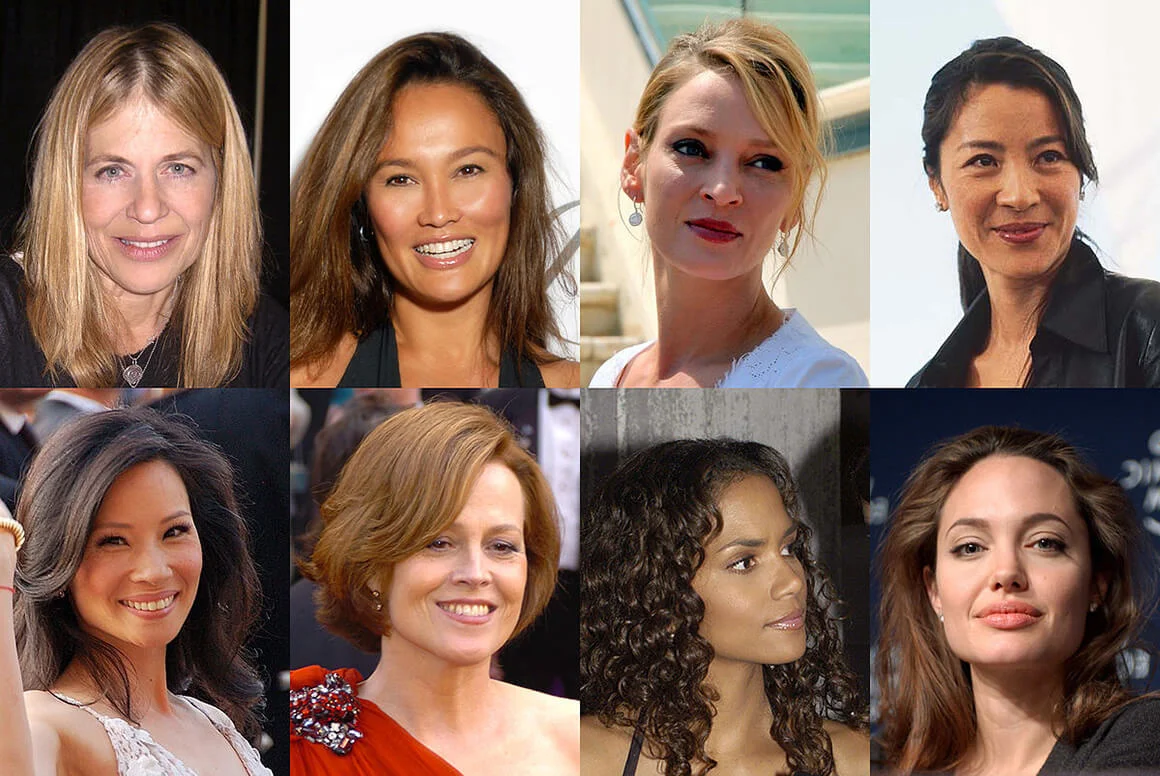
Reflection of feminine archetypes in modern culture
Feminine archetypes are often depicted in various aspects of modern culture, such as cinema, literature, art and music. They are presented in the form of symbols, characters, images and plots, showing the diversity of women’s roles, values, experiences and interactions. Some examples include:
- Cinema. In film, feminine archetypes can be represented through female protagonists, antagonists, and supporting characters that reflect different aspects of female nature, strength, and weakness. For example, the “mother” archetype may be represented in films about motherhood or family, the “lover” archetype in romantic comedies or dramas, and the “warrior” archetype in action and adventure films.
- Literature. In literature, feminine archetypes can be depicted through heroines, narratives and symbolism that reflect different aspects of women’s experience, reflection and relationship to the world. For example, the “old lady” archetype is represented in philosophical novels, the “maiden” archetype in novels about teenage girls, and the “Amazon” archetype in fantasy novels.
- Art. In art, feminine archetypes are represented through images, sculptures, collages and other forms of expression that reflect different aspects of female beauty, strength and creativity. For example, the “mother” archetype may be depicted in religious art, the “mistress” archetype in portraits and allegorical compositions, and the “warrior” archetype in battle scenes and historical frescoes.
- Music. In music, feminine archetypes are most often represented through songs, melodies and lyrics that reflect different aspects of female emotions, desires and spirituality. For example, the “mother” archetype may be celebrated in lullabies and folk songs, the “lover” archetype in romantic ballads and sexual rhythms, and the “warrior” archetype in hymns and protest songs.
- Theater and dance. In theater and dance, feminine archetypes can be represented through roles, plots, choreography and costumes that reflect different aspects of female expression, passion and relationships. For example, the “mother” archetype can be depicted in dramas about family and society, the “mistress” archetype in comedies about love and prejudice, and the “Amazon” archetype in tragedies about heroism and sacrifice.
- Fashion and design. In fashion and design, feminine archetypes are represented by styles, shapes, colors and accessories that reflect different aspects of female identity, expression and influence. For example, the “mother” archetype can be embodied in comfortable and practical clothes, the “mistress” archetype in elegant and sexy outfits, and the “warrior” archetype in sporty and avant-garde items.
Considering the reflection of feminine archetypes in modern culture, one can see their important role in shaping our perception, understanding and empathy of women’s experiences, values and relationships. They help us identify and rethink the stereotypes, taboos and restrictions associated with certain women’s roles, and inspire us to develop, dialogue and create relationships between genders, generations and cultures.
Thus, feminine archetypes in film, literature, art and other aspects of culture provide mirrors, windows and bridges through which we can know, appreciate and transform our ideas, feelings and beliefs about women and their contributions to society and history.
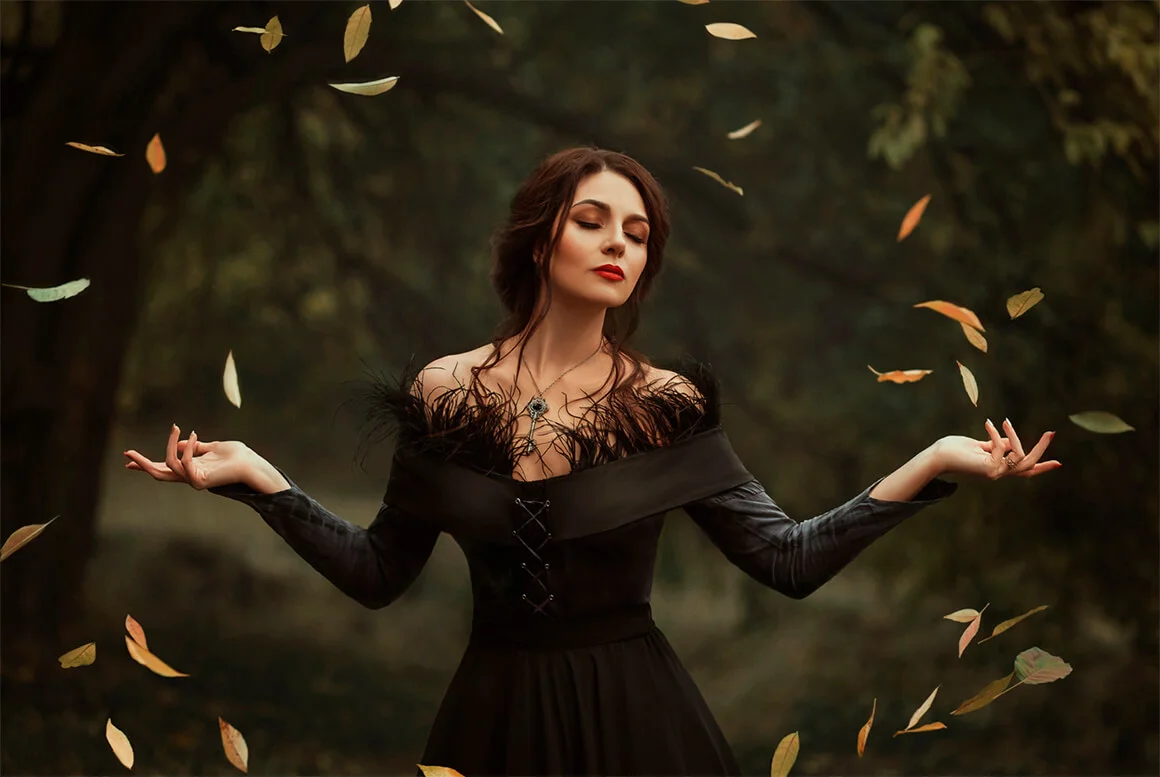
Practical advice from psychologists on developing and supporting positive feminine archetypes
To develop and maintain positive feminine archetypes, as well as overcome the negative impact on female identity, psychologists advise paying attention to the following points:
- Education. Be open to new knowledge, ideas and perspectives emerging from scientific research, social movements and creative projects. Study different feminine archetypes and their historical and cultural contexts. This will help you understand their meaning, metaphors, and impact on your life and relationships.
- Reflection. Conduct introspection and consider which archetypes reflect your own values, experiences and needs. This will allow you to recognize and accept your strengths and weaknesses, desires and boundaries.
- Discussion. Share your thoughts, feelings and questions about feminine archetypes with friends, partners, family and colleagues. This will promote openness, empathy and trust in relationships and communities.
- Creation. Use art therapy, poetry, prose, dance, music, and other forms of expression to explore and enact inspiring and supportive feminine archetypes. This will help you discover and develop your talents, passions and gifts.
- Meditation and prayer. Practice a variety of spiritual and psychological techniques to connect with your inner feminine archetypes, sources of wisdom, love and strength. This will have a positive effect on peace, faith and inspiration in your life.
- Role models. Look for role models—women who embody positive archetypes in their lives and activities. These could be celebrities, historical figures, relatives or acquaintances. Learn from their experience, personality and communication style.
- Support. Find a support group or community that focuses on feminine archetype development, self-discovery, and self-actualization. These could be seminars, workshops, webinars, clubs or online forums where you can get advice, inspiration and friendship.
- Literature. Read books, articles, and studies that describe positive feminine archetypes and their influence on psychology, sociology, and culture. This will help expand knowledge, deepen analytical and critical skills.
- Reconsidering stereotypes. Identify and analyze stereotypes and limitations associated with certain feminine archetypes that you may encounter in your environment or media. This will allow you to recognize and reject negative beliefs that can worsen your well-being, confidence and freedom.
- Activism. Get involved in campaigns, projects or initiatives that promote gender equality, diversity and respect for feminine archetypes in society and culture. This will enable you to contribute to positive change and development on a personal and collective level.
- Rest and recovery. Give yourself time to rest, relax and restore your energy, emotions and spirituality. This will help maintain balance, harmony and the resources to develop positive feminine archetypes in your life and relationships.
- Acceptance and forgiveness. Learn to accept and forgive yourself and others for mistakes, shortcomings and conflicts associated with feminine archetypes. This will allow you to develop the flexibility, empathy and understanding necessary to overcome the negative influence of archetypes on your own identity and well-being.
- Self-support. Celebrate your achievements, progress and growth in developing positive feminine archetypes. This will increase motivation, self-esteem and courage for further steps, challenges and changes.
- Attracting men. Invite men to dialogue, collaborate and explore feminine archetypes, their meaning and impact on relationships, family and society. This will help develop mutual understanding, equality and partnership in your life and culture.
- Diversity. Recognize and appreciate the diversity of feminine archetypes, cultures, traditions, lifestyles and identities that exist in your community and world. This will help develop tolerance, creativity and cooperation in learning, communication and relationships.
- Application in practice. Apply your knowledge and skills about feminine archetypes in everyday life, problem solving, decision making, parenting, career building and volunteering. This will help you become more responsible, competent and efficient.
- Supporting other women. Help other women develop positive feminine archetypes, learning, careers, health and wellness. This will create solidarity, collaboration and a support network for your mutual success, growth and transformation.
- Celebrating successes. Celebrate your and other women’s successes in developing positive feminine archetypes. This may include personal changes, professional achievements, or significant life events that highlight the strength, pride, and courage of the women in your community.
- Development of emotional resilience. Work on developing your emotional resilience, your ability to adapt to stress, loss and change associated with your feminine archetypes and identities. This will help maintain stability, optimism and self-control in unpredictable situations and challenges.
- Healthy relationships. Focus on building healthy, supportive and mutually respectful relationships with partners, friends, family and colleagues that align with your positive feminine archetypes and values. This will help create a safe and balanced environment for development and happiness.
- Self-awareness. Continue to work on developing self-awareness, the ability to recognize and respond to your inner feelings, thoughts and needs related to your feminine archetypes and identities. This will allow you to manage emotions, communication and behavior more consciously and constructively.
- Self-realization. Continuously work on personal growth and self-actualization by discovering and developing your talents, skills and dreams that align with your positive feminine archetypes and values. This will help you achieve pleasure and success in life.
These tips will help develop and support positive feminine archetypes in your life and help you overcome the negative influence of archetypes on your feminine identity. Focus on your self-knowledge, self-esteem and self-empowerment, and discover your individuality, strength and beauty in the diversity of feminine archetypes.

The importance of understanding the role of feminine archetypes in interaction with the outside world
Studying feminine archetypes promotes self-knowledge, improved communication and emotional intelligence. Applying this knowledge to your daily life allows you to balance your interactions with others, understand your needs, and respond to life’s challenges with greater confidence and flexibility.
Mastering feminine archetypes also promotes mutual understanding between the sexes, allowing both parties to better understand and respect different points of view and experiences. This contributes to the formation of more harmonious relationships, cooperation and constructive dialogue in personal and professional life.
Additionally, understanding the influence of feminine archetypes on culture and values helps shape a more inclusive, equal and dynamic society that recognizes and values the diversity of women’s experiences and contributions.
Applying this knowledge of feminine archetypes in education, psychology, the arts and other areas allows for the development of empathy, creativity and dialogue, which promotes collective well-being.
Knowledge of feminine archetypes helps build self-awareness and self-esteem, and stimulates personal growth and emotional development. This helps you set healthy boundaries, adequately express your needs, and advocate for your own interests in different situations.
Studying feminine archetypes also broadens the horizons of perception and helps to avoid stereotypes and prejudices that prevent women from equal participation in society. This encourages social solidarity, cooperation and gender equality.
Finally, understanding feminine archetypes helps ensure a positive impact on the future by creating a more harmonious and equal society that embraces the interests and needs of women at all levels of life.
Therefore, studying and understanding the role of feminine archetypes in interaction with the world around us has a significant impact on personal development, relationships and cultural understanding, and contributes to the creation of a more just, inclusive and equal society.
